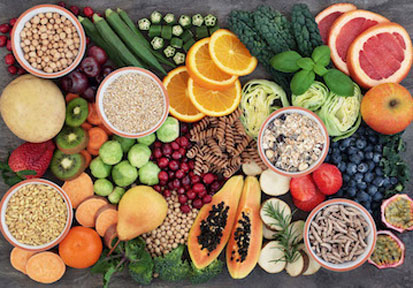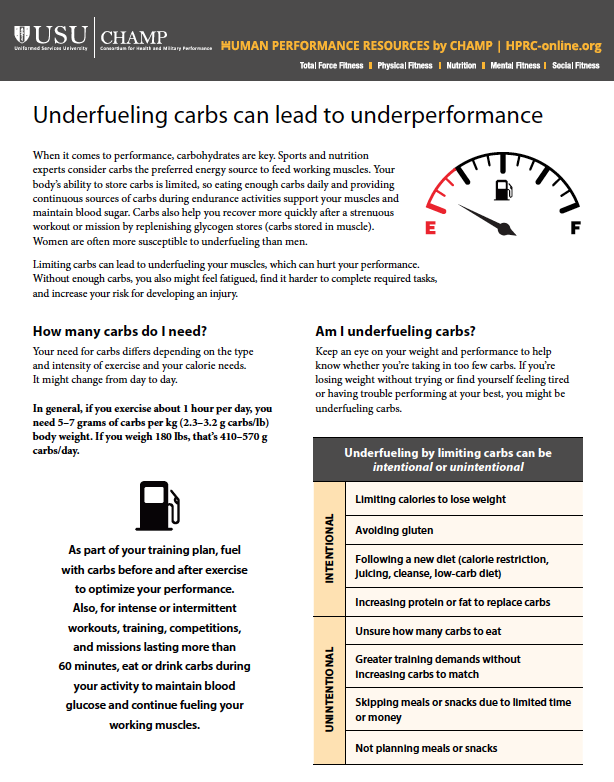When it comes to performance, carbohydrates are key. Sports and nutrition experts consider carbs the preferred energy source to feed working muscles. Your body’s ability to store carbs is limited, so eating enough carbs daily and providing continuous sources of carbs during endurance activities support the muscles and maintain blood sugar. Carbs also help you recover more quickly after a strenuous workout or mission by replenishing glycogen stores (carbs stored in muscle).
Limiting carbs can lead to underfueling your muscles, which can hurt your performance.
Without enough carbs, you also might feel fatigued, find it harder to complete required tasks, and increase your risk for developing an injury.
(Women are often more susceptible to underfueling than men.)
Underfueling by limiting carbs can be intentional or unintentional:
Intentional
- Limiting calories to lose weight
- Avoiding gluten
- Following a new diet (calorie restriction, juicing, cleanse, low-carb diet)
- Increasing protein or fat to replace carbs
Unintentional
- Unsure how many carbs to eat
- Greater training demands without increasing carbs to match
- Skipping meals or snacks due to limited time or money
- Not planning meals or snacks
How many carbs do I need?
Your need for carbs differs depending on the type and intensity of exercise and your calorie needs. It might change from day to day.
In general, if you exercise about 1 hour per day, you need 5–7 grams of carbs per kg (2.3-3.2 g carbs/lb) body weight. If you weigh 180 lbs that’s 410–570 g carbs/day.
As part of your training plan, fuel with carbs before and after exercise to optimize your performance. Also, for intense or intermittent workouts, training, competitions, and missions lasting more than 60 minutes, eat or drink carbs during your activity to maintain blood glucose and continue fueling your working muscles.
Choose the right kinds of carbs
 So, what type of carbs should you be eating?
So, what type of carbs should you be eating?
- Fill 3/4 of your plate with vegetables, whole grains, beans, and fruit.
- Choose a variety of colorful fruits and veggies to maximize vitamins, minerals, and fiber.
- Select whole-grain breads, grains, and pastas to get more performance-boosting nutrients than you would from white flour and other refined versions.
- Remember, dairy products such as milk and yogurt have carbs—as well as protein and calcium.
- If your activity level is demanding, nutrient-rich drinks like chocolate milk and homemade smoothies, and sports bars, gels, “goos,” and “blocks” are portable options to meet your carb needs.
Am I underfueling carbs?
Keep an eye on your weight and performance to help know whether you’re taking in too few carbs. If you’re losing weight without trying or find yourself feeling tired and/or having trouble performing at your best, you might be underfueling carbs.
A printable version of this infosheet is available here.

